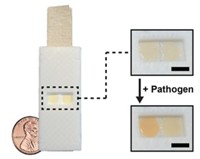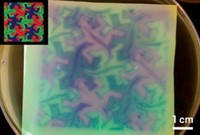Advertisement
Grab your lab coat. Let's get started
Welcome!
Welcome!
Create an account below to get 6 C&EN articles per month, receive newsletters and more - all free.
It seems this is your first time logging in online. Please enter the following information to continue.
As an ACS member you automatically get access to this site. All we need is few more details to create your reading experience.
Not you? Sign in with a different account.
Not you? Sign in with a different account.
ERROR 1
ERROR 1
ERROR 2
ERROR 2
ERROR 2
ERROR 2
ERROR 2
Password and Confirm password must match.
If you have an ACS member number, please enter it here so we can link this account to your membership. (optional)
ERROR 2
ACS values your privacy. By submitting your information, you are gaining access to C&EN and subscribing to our weekly newsletter. We use the information you provide to make your reading experience better, and we will never sell your data to third party members.
Analytical Chemistry
Engineered Bacteria Shine Light On Air Pollution
Biosensors: A pollutant-detecting device contains bioluminescent bacteria that glow if the surrounding air contains toxic chemicals
by Erika Gebel Berg
April 9, 2015

Detecting indoor air pollutants can safeguard human health, but existing approaches are time consuming, expensive, and require trained technicians. Now, researchers have developed a simple and inexpensive device that uses bioluminescent bacteria to monitor air quality and alert people of potentially unsafe conditions (Anal. Chem. 2015, DOI: 10.1021/ac5038208).
If bacteria encounter hazardous substances in the environment, they launch a system to repair damaged DNA and maintain other functions, says Robert S. Marks of Ben-Gurion University of the Negev, in Israel. By adding the genes that make luciferase—a glow-inducing protein—to the same part of the bacteria’s genome as the microbial repair response, scientists have created bacteria that glow in response to chemicals that are toxic to cells. Marks’s team embedded engineered Escherichia coli in a small, 0.6-mm-diameter cylinder of nutrient-rich gel. This disposable bacterial gel pad was attached to a photomultiplier tube via a light guide, which directs light from the bacteria to the tube. The photomultiplier captures emitted photons and converts them into an electrical signal that the researchers can detect and analyze.
To test the device, the researchers placed it into a 30-m2 office, says Marks. Then they mimicked a chemical accident by spilling 2 mL of acetone or up to 10 mL of chloroform in the room. After 40 minutes, the bacterial glow increased four- and 25,000-fold, respectively. In another experiment, the researchers could detect concentrations as low as 10 ppb for a wide range of chemicals, including formaldehyde and methanol. Currently, the device only detects whether a toxic chemical is present in the air, but Marks hopes that by incorporating bacteria with different chemical sensitivities, he may be able to identify chemicals with the device as well.





Join the conversation
Contact the reporter
Submit a Letter to the Editor for publication
Engage with us on Twitter